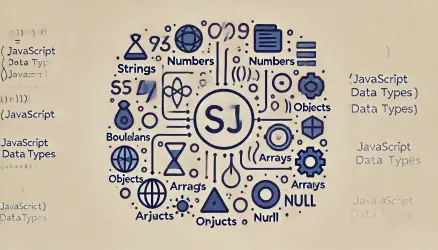The throw statement in JavaScript is used to generate custom errors. By using throw, you can create exceptions and handle them using the try…catch statement, allowing you to manage error handling in a more controlled and informative manner.
Basic Syntax
The basic syntax of the throw statement is as follows:
throw expression;
The expression can be any valid JavaScript expression, including strings, numbers, objects, or instances of the Error object.
Example of throw Statement
Here is an example demonstrating the use of the throw statement:
function divide(a, b) {
if (b === 0) {
throw new Error('Division by zero is not allowed.');
}
return a / b;
}
try {
console.log(divide(4, 2)); // Output: 2
console.log(divide(4, 0)); // Throws error
} catch (error) {
console.error(error.message); // Output: Division by zero is not allowed.
}
In this example, if the divisor b is zero, an error is thrown with a custom message. The try…catch block is used to handle the error and display the message.
Using throw with Custom Errors
You can create custom error objects by extending the built-in Error class. This allows you to define specific error types for your application:
class ValidationError extends Error {
constructor(message) {
super(message);
this.name = 'ValidationError';
}
}
function validateAge(age) {
if (age < 0 || age > 120) {
throw new ValidationError('Invalid age value.');
}
return true;
}
try {
validateAge(150); // Throws ValidationError
} catch (error) {
if (error instanceof ValidationError) {
console.error(error.message); // Output: Invalid age value.
} else {
console.error('Unknown error:', error);
}
}
Re-throwing Errors
In some cases, you might want to handle an error partially and then re-throw it to be handled by another try...catch block:
function parseJSON(jsonString) {
try {
return JSON.parse(jsonString);
} catch (error) {
if (error instanceof SyntaxError) {
console.error('JSON parsing error:', error.message);
throw error; // Re-throw the error
} else {
throw new Error('Unknown error');
}
}
}
try {
parseJSON('invalid JSON');
} catch (error) {
console.error('Caught an error:', error.message); // Output: Caught an error: JSON parsing error
}
Best Practices
Here are some best practices for using the throw statement effectively:
- Use descriptive error messages: Provide clear and descriptive error messages to make debugging easier.
- Create custom error types: Define custom error types for different error scenarios in your application.
- Use try…catch: Always handle thrown errors using
try...catchblocks to prevent your application from crashing. - Re-throw when necessary: Re-throw errors when partial handling is needed, ensuring the error is handled appropriately by other parts of your code.
Conclusion
The throw statement in JavaScript is a powerful tool for generating and handling custom errors. By understanding how to use throw effectively, you can improve error handling in your applications and create more robust and maintainable code.


